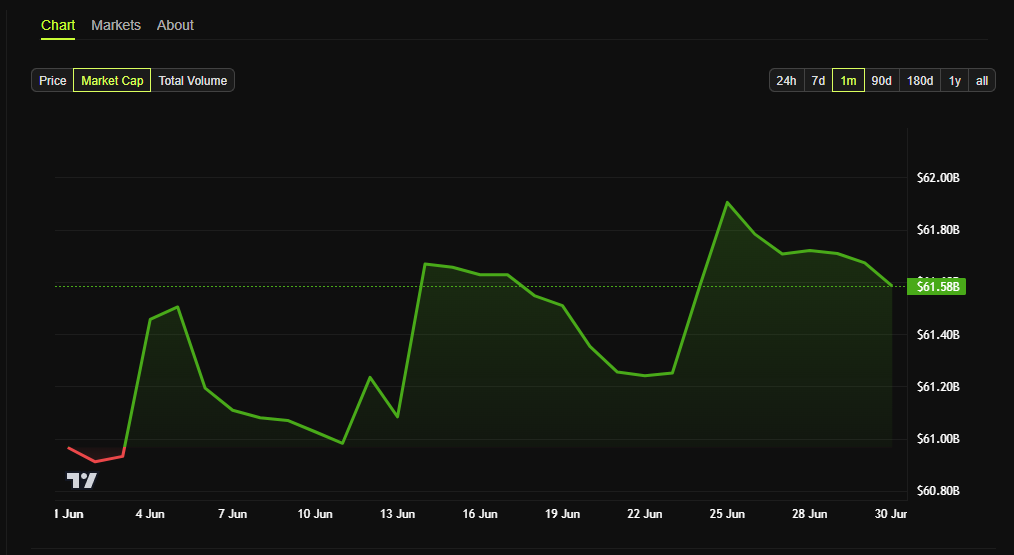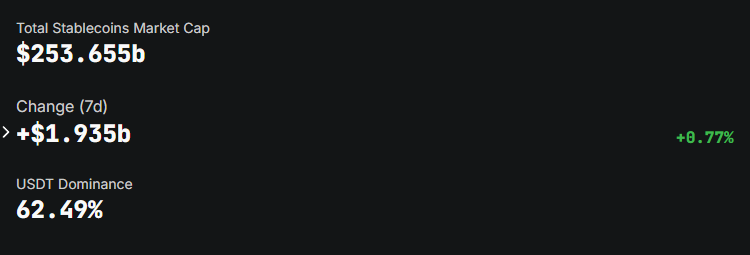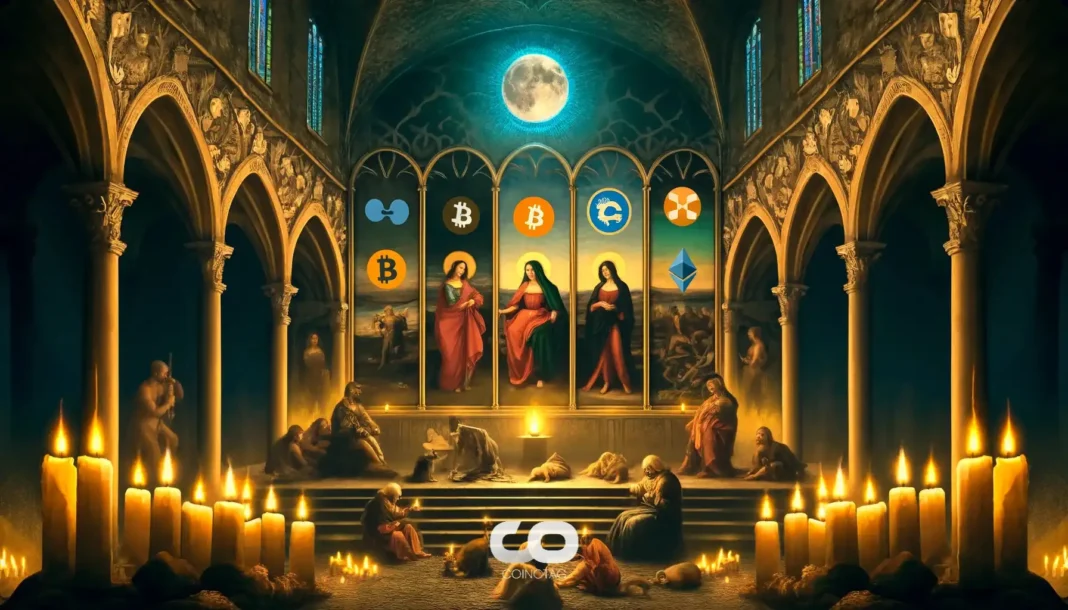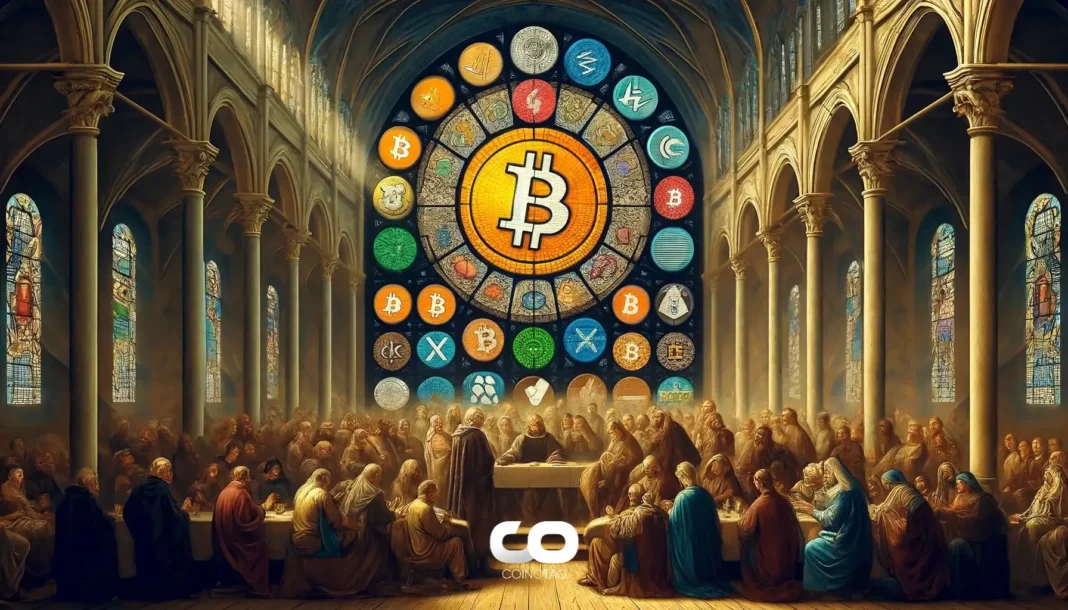| COINOTAG recommends • Exchange signup |
| 💹 Trade with pro tools |
| Fast execution, robust charts, clean risk controls. |
| 👉 Open account → |
| COINOTAG recommends • Exchange signup |
| 🚀 Smooth orders, clear control |
| Advanced order types and market depth in one view. |
| 👉 Create account → |
| COINOTAG recommends • Exchange signup |
| 📈 Clarity in volatile markets |
| Plan entries & exits, manage positions with discipline. |
| 👉 Sign up → |
| COINOTAG recommends • Exchange signup |
| ⚡ Speed, depth, reliability |
| Execute confidently when timing matters. |
| 👉 Open account → |
| COINOTAG recommends • Exchange signup |
| 🧭 A focused workflow for traders |
| Alerts, watchlists, and a repeatable process. |
| 👉 Get started → |
| COINOTAG recommends • Exchange signup |
| ✅ Data‑driven decisions |
| Focus on process—not noise. |
| 👉 Sign up → |
-
Circle has taken a significant step by applying to become a US national trust bank, aiming to manage USDC reserves and serve institutional clients under a regulated framework.
-
This strategic move positions USDC as a fully compliant stablecoin, aligning with upcoming US legislation and potentially reshaping the competitive landscape against Tether.
-
According to COINOTAG, Circle’s trust bank application signals a pivotal moment in stablecoin regulation, offering a first-mover advantage in the evolving US market.
Circle’s national trust bank application could redefine US stablecoin regulation, positioning USDC to challenge Tether’s dominance amid new compliance standards.
Circle’s National Trust Bank Application: A Game-Changer for USDC and Stablecoin Regulation
Circle’s recent application to the Office of the Comptroller of the Currency (OCC) to establish the First National Digital Currency Bank marks a transformative development for the stablecoin ecosystem. If approved, this trust bank will empower Circle to custody its own reserves, a critical step towards enhancing transparency and regulatory compliance. Unlike traditional banks, this trust bank license restricts Circle from accepting deposits or issuing loans, focusing solely on asset custody and management.
Moreover, Circle’s ability to hold tokenized assets such as bonds and stocks for institutional clients signals an expansion beyond cryptocurrency, integrating digital assets into mainstream finance. This move aligns with the broader regulatory trend in the US, where lawmakers are preparing to implement the GENIUS Act, which mandates fully backed reserves and federal licensing for stablecoin issuers. Circle’s proactive approach positions USDC as a frontrunner in meeting these stringent requirements.
Implications for Institutional Adoption and Market Dynamics
By securing a national trust bank charter, Circle aims to deepen its engagement with regulated financial institutions, including banks and fintech companies. This regulatory endorsement could accelerate USDC’s integration into payment systems, wallets, and financial services, offering a compliant alternative to Tether’s USDT, which currently operates without US federal oversight. The trust bank status also allows Circle to directly manage reserves, reducing reliance on third-party custodians and enhancing operational control.
| COINOTAG recommends • Professional traders group |
| 💎 Join a professional trading community |
| Work with senior traders, research‑backed setups, and risk‑first frameworks. |
| 👉 Join the group → |
| COINOTAG recommends • Professional traders group |
| 📊 Transparent performance, real process |
| Spot strategies with documented months of triple‑digit runs during strong trends; futures plans use defined R:R and sizing. |
| 👉 Get access → |
| COINOTAG recommends • Professional traders group |
| 🧭 Research → Plan → Execute |
| Daily levels, watchlists, and post‑trade reviews to build consistency. |
| 👉 Join now → |
| COINOTAG recommends • Professional traders group |
| 🛡️ Risk comes first |
| Sizing methods, invalidation rules, and R‑multiples baked into every plan. |
| 👉 Start today → |
| COINOTAG recommends • Professional traders group |
| 🧠 Learn the “why” behind each trade |
| Live breakdowns, playbooks, and framework‑first education. |
| 👉 Join the group → |
| COINOTAG recommends • Professional traders group |
| 🚀 Insider • APEX • INNER CIRCLE |
| Choose the depth you need—tools, coaching, and member rooms. |
| 👉 Explore tiers → |
As the US regulatory environment tightens, exchanges and financial platforms may increasingly favor stablecoins issued by federally licensed entities. This shift could diminish USDT’s market share domestically, despite its global liquidity advantage. Circle’s strategy reflects a broader trend towards institutional-grade stablecoins that prioritize regulatory compliance and consumer protections.

| COINOTAG recommends • Exchange signup |
| 📈 Clear interface, precise orders |
| Sharp entries & exits with actionable alerts. |
| 👉 Create free account → |
| COINOTAG recommends • Exchange signup |
| 🧠 Smarter tools. Better decisions. |
| Depth analytics and risk features in one view. |
| 👉 Sign up → |
| COINOTAG recommends • Exchange signup |
| 🎯 Take control of entries & exits |
| Set alerts, define stops, execute consistently. |
| 👉 Open account → |
| COINOTAG recommends • Exchange signup |
| 🛠️ From idea to execution |
| Turn setups into plans with practical order types. |
| 👉 Join now → |
| COINOTAG recommends • Exchange signup |
| 📋 Trade your plan |
| Watchlists and routing that support focus. |
| 👉 Get started → |
| COINOTAG recommends • Exchange signup |
| 📊 Precision without the noise |
| Data‑first workflows for active traders. |
| 👉 Sign up → |
Circle’s USDC Market Cap Chart in June. Source: COINOTAG
Tether’s USDT Dominance Faces Regulatory Challenges in the US Market
Tether’s USDT remains the dominant stablecoin globally, commanding approximately 62.5% of the market share, largely driven by its liquidity and extensive exchange integrations, particularly in Asia. However, its registration in El Salvador and lack of US federal regulation present potential vulnerabilities as US lawmakers enforce stricter compliance standards.
| COINOTAG recommends • Traders club |
| ⚡ Futures with discipline |
| Defined R:R, pre‑set invalidation, execution checklists. |
| 👉 Join the club → |
| COINOTAG recommends • Traders club |
| 🎯 Spot strategies that compound |
| Momentum & accumulation frameworks managed with clear risk. |
| 👉 Get access → |
| COINOTAG recommends • Traders club |
| 🏛️ APEX tier for serious traders |
| Deep dives, analyst Q&A, and accountability sprints. |
| 👉 Explore APEX → |
| COINOTAG recommends • Traders club |
| 📈 Real‑time market structure |
| Key levels, liquidity zones, and actionable context. |
| 👉 Join now → |
| COINOTAG recommends • Traders club |
| 🔔 Smart alerts, not noise |
| Context‑rich notifications tied to plans and risk—never hype. |
| 👉 Get access → |
| COINOTAG recommends • Traders club |
| 🤝 Peer review & coaching |
| Hands‑on feedback that sharpens execution and risk control. |
| 👉 Join the club → |
The GENIUS Act, poised for congressional approval, will require stablecoin issuers to maintain fully backed reserves and operate under federal licenses. This regulatory framework could compel US exchanges to delist or restrict access to unlicensed stablecoins like USDT, creating an opening for USDC to capture market share domestically.

Tether’s USDT Dominance. Source: DeFilLama
Strategic Advantages of Circle’s Trust Bank License
Circle’s trust bank license not only enhances regulatory compliance but also enables the company to innovate in tokenized finance. By offering custody services for tokenized stocks and bonds, Circle is positioning USDC as a versatile digital asset capable of bridging traditional finance and blockchain technology. This could lead to increased adoption among institutional investors and regulated entities seeking secure and compliant digital asset solutions.
| COINOTAG recommends • Exchange signup |
| 📈 Clear control for futures |
| Sizing, stops, and scenario planning tools. |
| 👉 Open futures account → |
| COINOTAG recommends • Exchange signup |
| 🧩 Structure your futures trades |
| Define entries & exits with advanced orders. |
| 👉 Sign up → |
| COINOTAG recommends • Exchange signup |
| 🛡️ Control volatility |
| Automate alerts and manage positions with discipline. |
| 👉 Get started → |
| COINOTAG recommends • Exchange signup |
| ⚙️ Execution you can rely on |
| Fast routing and meaningful depth insights. |
| 👉 Create account → |
| COINOTAG recommends • Exchange signup |
| 📒 Plan. Execute. Review. |
| Frameworks for consistent decision‑making. |
| 👉 Join now → |
| COINOTAG recommends • Exchange signup |
| 🧩 Choose clarity over complexity |
| Actionable, pro‑grade tools—no fluff. |
| 👉 Open account → |
For consumers, the trust bank status may translate into broader USDC availability across payment platforms and financial apps, supported by stronger legal protections under US law. This regulatory clarity and institutional backing could drive a significant shift in stablecoin usage patterns within the US.
Conclusion
Circle’s application to become a US national trust bank represents a strategic milestone in the evolution of stablecoins, signaling a move towards enhanced regulatory compliance and institutional adoption. While Tether maintains global dominance, the regulatory landscape in the US is shifting in favor of licensed entities like Circle. This development could reshape the stablecoin market by prioritizing onshore compliance and consumer protections, ultimately benefiting the broader digital asset ecosystem.
| COINOTAG recommends • Members‑only research |
| 📌 Curated setups, clearly explained |
| Entry, invalidation, targets, and R:R defined before execution. |
| 👉 Get access → |
| COINOTAG recommends • Members‑only research |
| 🧠 Data‑led decision making |
| Technical + flow + context synthesized into actionable plans. |
| 👉 Join now → |
| COINOTAG recommends • Members‑only research |
| 🧱 Consistency over hype |
| Repeatable rules, realistic expectations, and a calmer mindset. |
| 👉 Get access → |
| COINOTAG recommends • Members‑only research |
| 🕒 Patience is an edge |
| Wait for confirmation and manage risk with checklists. |
| 👉 Join now → |
| COINOTAG recommends • Members‑only research |
| 💼 Professional mentorship |
| Guidance from seasoned traders and structured feedback loops. |
| 👉 Get access → |
| COINOTAG recommends • Members‑only research |
| 🧮 Track • Review • Improve |
| Documented PnL tracking and post‑mortems to accelerate learning. |
| 👉 Join now → |
As legislation advances, stakeholders should monitor how these regulatory changes influence stablecoin issuance, market dynamics, and integration into traditional financial systems. Circle’s proactive approach positions USDC to lead in this new era of regulated digital finance.
| COINOTAG recommends • Members‑only research |
| 📌 Curated setups, clearly explained |
| Entry, invalidation, targets, and R:R defined before execution. |
| 👉 Get access → |
| COINOTAG recommends • Members‑only research |
| 🧠 Data‑led decision making |
| Technical + flow + context synthesized into actionable plans. |
| 👉 Join now → |
| COINOTAG recommends • Members‑only research |
| 🧱 Consistency over hype |
| Repeatable rules, realistic expectations, and a calmer mindset. |
| 👉 Get access → |
| COINOTAG recommends • Members‑only research |
| 🕒 Patience is an edge |
| Wait for confirmation and manage risk with checklists. |
| 👉 Join now → |
| COINOTAG recommends • Members‑only research |
| 💼 Professional mentorship |
| Guidance from seasoned traders and structured feedback loops. |
| 👉 Get access → |
| COINOTAG recommends • Members‑only research |
| 🧮 Track • Review • Improve |
| Documented PnL tracking and post‑mortems to accelerate learning. |
| 👉 Join now → |









